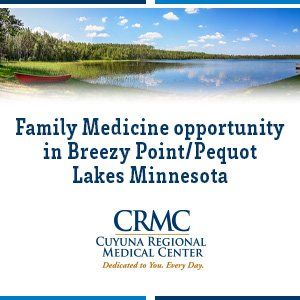alls in older adults are a leading source of morbidity and health care-related costs. In addition to the significant costs associated with treating fall-related injuries, falls are closely linked to decreased health outcomes over time, including mobility and cognitive functioning decline. Many older adults limit their physical activity and social involvement out of a fear of falling, which can have psychological and emotional implications, especially for community-dwelling individuals. Physical activity and social interactions both decreased for this population during the COVID-19 pandemic, potentially exacerbating current trends in falls and fall-related injuries.
cover story TWO
Fall-Prevention Research
Improving health and cost savings
By Craig Solid, PhD
Several evidence-based fall-prevention programs have been developed to reduce the likelihood of falling among older adults. Their primary goals are increasing strength and balance, improving communication with health care providers and raising awareness of an individual’s physical environment. These strategies have been shown to successfully reduce fall risk and the fear of falling while increasing physical activity, self-efficacy and patient activation. These programs can also help improve physical functioning more generally, reducing social isolation and physical inactivity. Steps to assess and reduce fall risk are components of national reimbursement and quality initiatives, including from the Centers for Medicare & Medicaid Services.
A Regional Case Study
Trellis is a Minnesota-based nonprofit organization that provides access to social care services to help older adults live healthy and connected lives in their communities. Trellis is the designated area agency on aging for the Twin Cities metro area and awards federal Older Americans Act funding to community-based organizations that deliver older adult services. One of Trellis’s programs is Juniper, which delivers evidence-based health promotion classes through a statewide network of community-based health care organizations. Since 2018, over 29,000 Minnesotans have participated in Juniper programming, with more than half of those participants joining from rural areas of the state.
Four Juniper classes are fall-prevention programs that were developed by experts in the field and validated through multiple scientific studies. These programs are: A Matter of Balance (MOB), Tai Ji Quan: Moving for Better Balance (TJQMBB), Stepping On (SO), and Stay Active and Independent for Life (SAIL). These classes effectively engage older individuals with chronic conditions or those at risk for falls, providing them with essential tools and knowledge to proactively manage their health. Additionally, the classes serve as a strong source of motivation and socialization, empowering participants to take actionable steps toward improving their overall well-being. All four classes are available to people across Minnesota with in-person and virtual options.
Recently, Juniper conducted a study to examine the cost-savings associated with these fall-prevention programs. This study consisted of a literature review to identify and collect relevant estimates of the costs of falls and related injuries, and an economic analysis of Juniper participants’ self-reported fall frequency before and after a fall-prevention class.
MOB class participation was associated with total medical savings.
Literature Review
There is extensive literature regarding fall risk, fall rates and associated costs. The National Council on Aging (NCOA) and the Centers for Disease Control and Prevention (CDC) state that one in four older Americans fall each year. A recent study reported that 24% of respondents self-reported a fall during the year and of those 49% fell two or more times.
During the height of the COVID-19 pandemic, activity levels dropped substantially in older populations, as reported by multiple studies. These reductions in physical activity and increases of sedentary lifestyles resulted in decreased mobility and increased depression and anxiety. A 2023 review indicated that the most frequent recommendation for improving mobility was to increase physical activity to prevent “the occurrence of adverse results, such as falls, fractures, and functional decline.”
Functional decline is a significant issue within the older adult population. It has been estimated that 16% of Medicare patients are frail, and an additional 47.2% may be classified as “pre-frail,” meaning that they demonstrate some of the commonly cited frailty characteristics. This suggests that individuals who are currently mobile and able to participate in physical activities may exhibit one or more signs that their physical functioning may be in the early stages of decline. For these individuals, the risk of functional decline can have major implications if it is not addressed. Those with a reduced functional status have a higher risk of falls, and once individuals become frail, fall prevalence may be five times that of non-frail patients. Frail patients also have significantly higher hazards for cardiovascular events like AMI, stroke, and peripheral vascular disease, and experience increased health care utilization and costs. Additionally, physical frailty may be linked to cognitive decline, which can also increase fall risk.
Fortunately, physical exercise can slow and may even be able to reduce frailty. Multiple studies have demonstrated that physical activity interventions can reduce or even reverse frailty measures, increasing muscle mass, strength and physical performance. This suggests that in addition to immediate benefits of fall risk reduction, physical activity interventions may help slow functional decline and frailty, potentially reducing the risk of major cardiac events, depression/anxiety and cognitive decline.
Interventions and Cost Savings
Most fall-prevention programs, including Juniper’s, are provided in a social, group setting. Group activity programs help reduce social isolation and loneliness that were exacerbated by COVID-19. Studies have shown that persistent isolation and loneliness results in the release of stress hormones that cause long-term damage through increases in cardiovascular stress and inflammation. This increases the risk of heart disease and other chronic diseases and changes gene expression in white blood cells resulting in a reduction in the ability to fight disease.
The direct costs associated with falling varies by type of fall, such as injurious, non-injurious, fatal, non-fatal, overall, and so on. Also by setting, such as community, while hospitalized, while in assisted living and so on. Finally, variation occurs through type of care provided, such as any medical attention, hospitalization, emergency department, nursing home, outpatient/physician office, overall, and so on. In 2022 U.S. dollars, estimates for the cost per fall ranged from $1,670-$32,426. Estimates for fall-related hospitalizations go as high as $60,417 in 2022 USD. The indirect costs for falls are also substantial. Given that experiencing a fall significantly increases the chances of a subsequent fall, each fall increases the risk of future fall-related costs, especially if future falls are injurious or occur in specific care settings. Those who fall while in the hospital have longer lengths of stay and incur higher hospital costs. Further, falls are associated with an increased risk of a nursing home or long-term care placement after hospital discharge. This finding is notable given that the most recent estimates for the annual cost of long-term care in Minnesota range from $45,600 for assisted living to $132,448 for a nursing home. Falls among older adults are the leading cause of head injuries and hip fractures (95% of hip fractures result from a fall), impeding mobility, cognitive function and leading to restrictions in daily activities.
Several studies have examined the reduction in falls associated with the classes that Juniper offers. They have consistently demonstrated lower rates of falls, fall-related fractures, and common measures of physical functioning such as the Timed Up and Go test. Several studies have shown these classes to be cost-effective. CMS has even stated that MOB class participation was associated with total medical savings.
The reduction in self-reported falls among the 4 class populations was substantial
Analysis of Juniper Data
At the beginning of each Juniper fall-prevention course, participants fill out a survey in which they self-report, among other things, their frequency of falls during the previous 3 months, and how often those falls resulted in injury. At the end of the course, several weeks later, participants are again surveyed and asked about fall frequency since the start of the class. The surveys also ask about their general health, emotional well-being, healthy behaviors and social interactions. This analysis uses data from January 2019 through January 2020.
The reduction in self-reported falls among the four class populations was substantial. Among those who took MOB, 37.1% fell prior to the class compared with 17.1% after: a reduction of over half. Participants in the other programs also showed improvements: fall rates in TJQMBB dropped from 23.5% to 14.7%; in SO they dropped from 34.7% to 16.2%; and in SAIL they decreased from 27.0% to 20.6%.
Using these data and information from the literature review regarding the cost associated with falls, Juniper was able to estimate the total cost avoidance from these reductions in falls. Using the sample sizes of those within each class, Juniper could then estimate the total cost-avoidance realized by that cohort and calculate the average savings per participant. To ensure robustness of the results, fall-related cost inputs were varied, as were the number of participants included in the analysis, since some participants attended only some of the classes over the duration of the program.
The estimated cost savings were substantial. Within the MOB class of 645 participants, it was estimated that a total of 297 falls were avoided, producing a total cost-avoidance of $3,960,495. That equates to over $6,100 in cost-avoidance per participant. Savings associated with the other classes were similarly large. The total savings from reduced fall rates were estimated to be $2.2 million, $1.9 million, and $213,000 for SO, TJQMBB, and SAIL, respectively.
Other Benefits
Based on pre- and post-class survey data, participants also experienced other improvements in their health and well-being. For example, the percent who self-rated general health as “very good” or “excellent” increased in three of four class populations; the statistic related to self-rated well-being increased in all four groups. Notably, the percent indicating moderate-to-high levels of fear of falling decreased in all four classes. The biggest drop was observed in the MOB, which showed a reduction from 52% at the start of class to 36% by the end of class.
There was also evidence of improved self-efficacy and healthy behaviors. In each of the four class populations, over 90% of participants “agreed” or “strongly agreed” with each of the following statements:
- I feel more comfortable talking to my provider about fall risks
- I feel more comfortable talking to my family and friends about falling
- I feel more comfortable increasing my activity
- I plan to continue exercising
- I feel more satisfied with life
Over 95% indicated that they would recommend the class to a friend or relative, and between 75% and 90% reported that the classes helped them socialize more with others and manage their stress level. Over 90% of all classes agreed or strongly agreed that their class helped them prevent future falls.
Conclusion
The results of this study suggest overwhelming evidence of the effectiveness of Juniper-supported fall-prevention programs to reduce fall risk and quantifies the cost savings associated with avoiding fall-related health care utilization. These benefits were seen across studies and among numerous patient populations. Juniper-supported fall-prevention programs are effective across age groups, geographic areas, and differing levels of health and disease burden.
From this cost-savings analysis, significant savings associated with Juniper-supported fall-prevention programs were estimated on an aggregate, per session, per participant and per completer basis. The extent to which a fall in older adults can significantly influence their ongoing health status and health care utilization makes it clear that preventing falls will result in cost savings. The fall reduction observed among Juniper participants should not be discounted. In the MOB program, the percentage of participants experiencing a fall was reduced by over half. Similarly, the average number of falls was 60% lower after program completion. The reductions in falls among participants of TJQMBB were statistically significant, despite low baseline fall rates (21%) compared to the published literature. The Stepping On program observed similar reductions: 34.7% to 16.2% for all participants, 27.1% to 12.9% for participants with data at both time points, and between a 65-70% reduction in the average number of falls.
Finally, cost savings were sizable even when using conservative estimates of the associated cost avoided per fall avoided. This suggests that significant improvements in fall rates in these real-world cohorts from Juniper-supported fall-prevention programs play a meaningful role in the overall cost savings; these savings are not simply a function of random fluctuation in participant falls. Health care providers and payers should make note of the significant health benefits and cost savings associated with these programs.
Craig Solid, PhD, is the owner and principal of Solid Research Group. He helps organizations focus on quantify and the value of innovative health care solutions. He has co-authored over 60 peer-reviewed articles and is the author of multiple books.
MORE STORIES IN THIS ISSUE
cover story one
Freedom Echoing: A legislative fix for health care?
By Kip Sullivan, JD
cover story two
Fall-Prevention Research: Improving health and cost savings


















